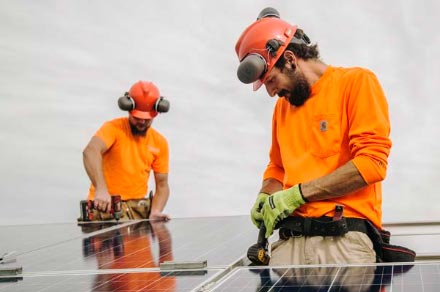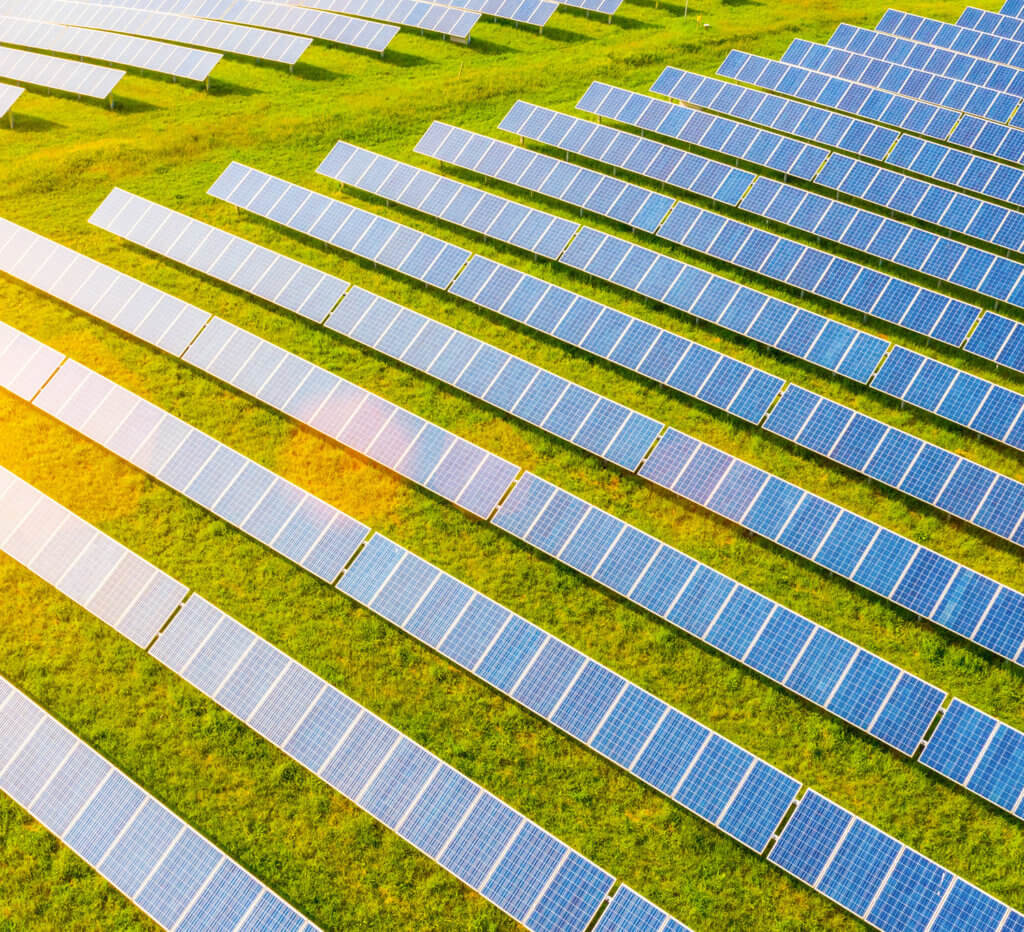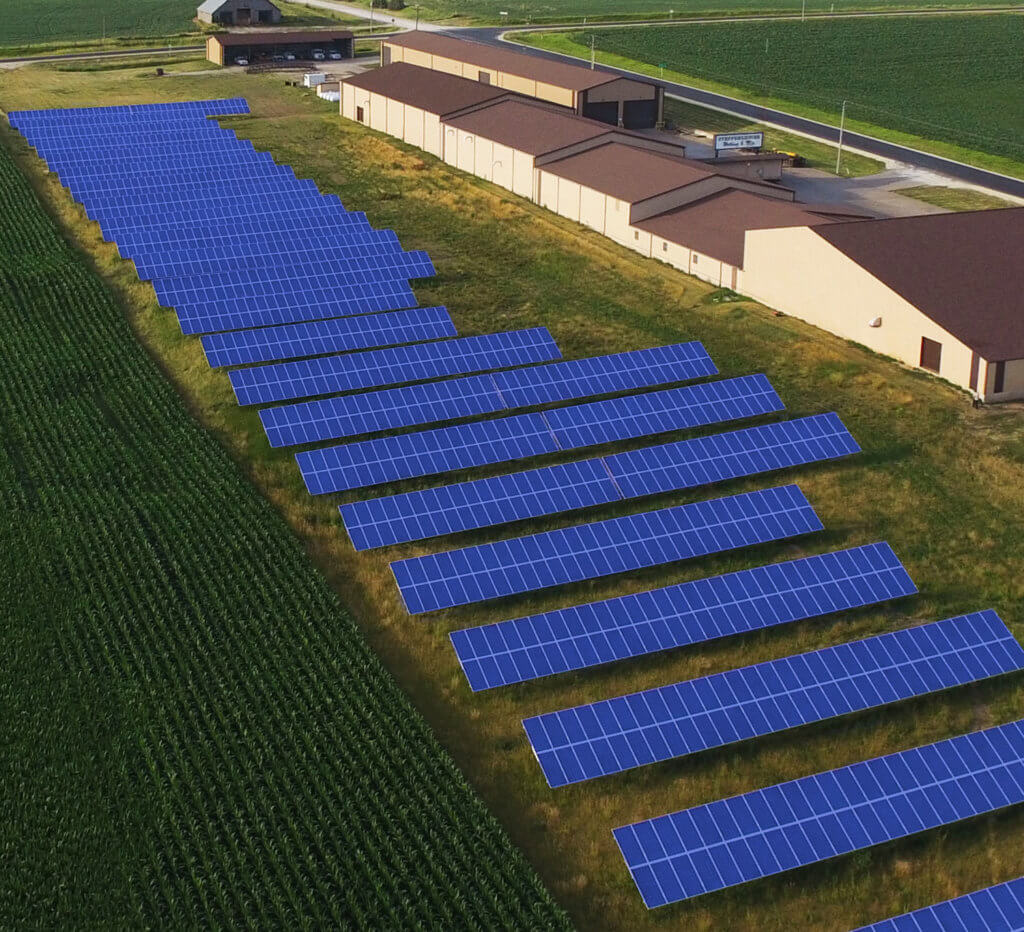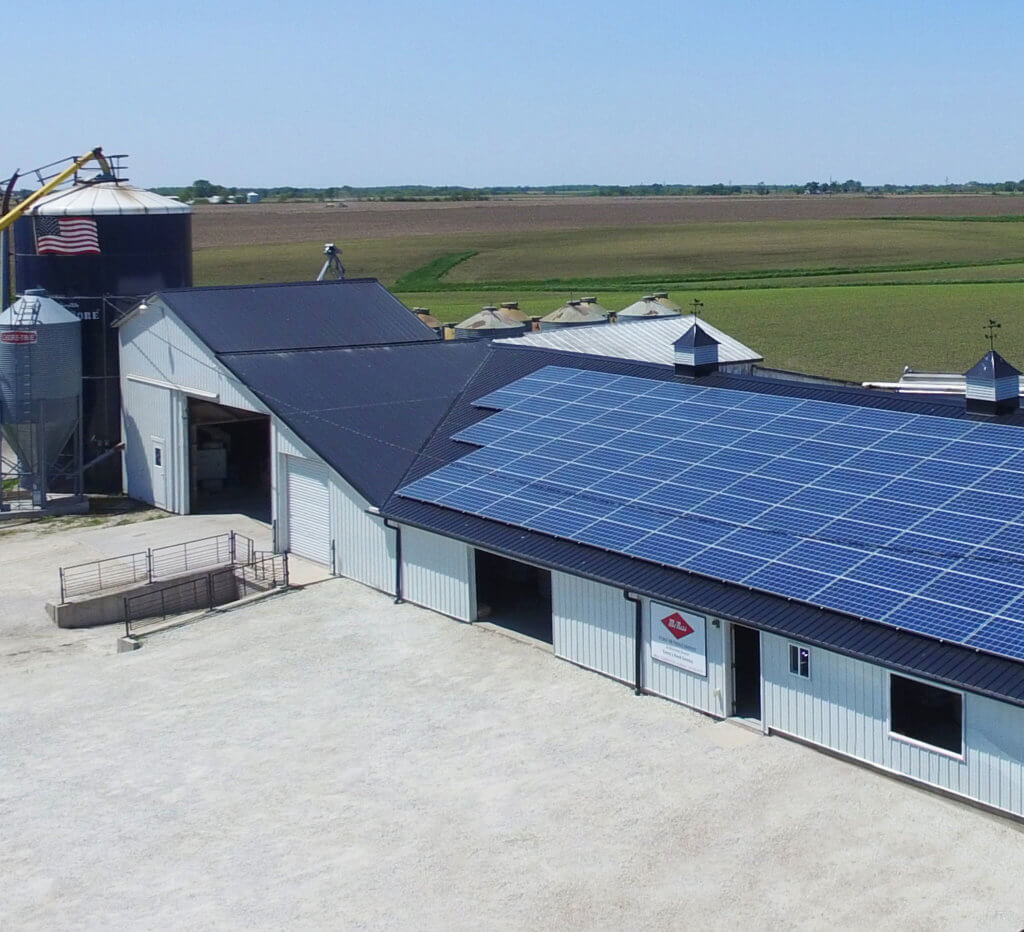Recent legislative developments and proposals promise to reshape the solar energy landscape in 2021 and beyond. This is a rapidly developing area; most of the following proposals are not even in the bill writing phase, let alone passed and signed into law. However, the plans being considered in the White House and Congress give us insight into the direction that clean energy legislation will likely take.
This article provides a comprehensive summary of current clean energy legislation and proposals as of April 7th, 2021.
TABLE OF CONTENTS
Investment Tax Credit
Demand for Solar
Electric Vehicles
Energy Storage
Social Cost of Carbon and Carbon Tax credits
THE AMERICAN JOBS PLAN
Solar ITC
Grants
New Standards
Electric Vehicles
Power Infrastructure
Research & Development
Federal Procurement
ENERGY STORAGE TAX INCENTIVE AND DEPLOYMENT ACT
Summary
Several recent legislative proposals could change how the solar investment tax credit (ITC) works. A bill currently in the Senate would turn the tax credit into a direct payment for projects started before January 1, 2023 and placed in service after March 25, 2021. A House bill would expand the credit to include standalone energy storage systems. The Biden administration’s American Jobs Plan would extend and expand the ITC, as well as tie certain regulatory issues like unionization to the credit. Because these proposals intersect and overlap, we expect some of them to be combined, modified, or scrapped altogether.
Demand for Solar
We expect demand for solar energy to continue to increase. The American Jobs Plan includes proposals to extend and expand the ITC, drastically increase federal subsidies for renewable energy installations and electric vehicles, and use federal spending power and federal procurement rules to stimulate the renewable energy sector. The upward revision of the social cost of carbon estimate will also shift the balance of federal regulatory rulemaking and federal procurement towards clean energy solutions.
Electric Vehicles
The American Jobs Plan calls for substantial additional federal subsidies for electric vehicles, as well as subsidies and grants to build out several hundred thousand charging stations nationwide. The Plan would also direct significant funding towards electric vehicle research and development.
Energy Storage
Several proposals address energy storage. The Energy Storage Tax Incentive and Deployment Act would amend the ITC to include standalone energy storage systems. The American Jobs Plan would expand the ITC, most likely also including battery energy storage.
Social Cost of Carbon and Carbon Taxes
There are no current proposals for carbon taxes from the Biden administration. It is our assessment that a carbon tax is unlikely at this time. However, we expect that a carbon tax may become a possibility in the future. The social cost of carbon estimate, which was recently revised upwards from $7 per ton to $51 per ton, is a metric businesses should watch closely as a harbinger of a possible carbon tax.
The American Jobs Plan

This is the most relevant section for the solar industry. President Biden is proposing two major changes to the federal incentive structure for solar projects.
The first is a ten-year extension to the ITC. The ITC has already been extended several times, most recently by two years in the Omnibus bill at the end of 2020. An additional ten years would extend the ITC through 2034.
The second change is a conversion of the ITC from a tax credit to a direct payment, allowing individuals and businesses with insufficient tax exposure an opportunity to use federal solar incentives. This is highly significant as it would greatly expand the pool of businesses and individuals that could afford to invest in solar.
Mention is also made of expanding the program. It is not entirely clear what this might entail. One strong possibility is a credit for standalone energy storage systems. Another, found elsewhere in the Plan, is to expand carbon capture tax credits:

The extended and expanded ITC would be tied to forthcoming federal labor regulations:

It is possible that this section could mean that in order to receive the credit or payment, taxpayers will have to prove that their solar energy contractors allow unionization and follow other new federal requirements. If so, solar energy companies may need to adapt or exit the market, and solar customers should prepare for the possibility of increased complexity when claiming the solar ITC. It is unclear what this will portend for solar energy in “right to work” states.
The administration’s plan promises to improve access to clean energy for government entities, which cannot take advantage of tax credits.

This would provide an alternative to complex power purchasing agreements and other financial vehicles currently used to make solar viable for tax exempt government entities.
The Biden administration aims to set a nationwide clean energy standard (CES) modeled on best practices from state-level standards. CESs establish targets for the percentage of clean energy in a utility’s portfolio. They may also feature other requirements, in this case including labor standards requirements.

The President’s plan calls for putting the U.S. grid “on the path to achieving 100 percent carbon-free electricity by 2035.” Details are few and whether the proposal is aspirational or mandatory depends on Congress. Scientific American explores the challenges and possibilities ahead. Even if the standard is largely aspirational, it will likely accelerate clean energy development.
The Plan contains several initiatives aimed at improving electric cars and increasing their affordability and availability.

If these goals are even partially achieved, demand for electric power from EVs will dramatically increase in the U.S. We expect this demand to be met by broader adoption of residential solar, more commercial renewable energy projects powering charging stations for employees at work, and utility-scale wind and solar projects.
The Plan addresses America’s power infrastructure, as well. Grid modernization – a collection of upgrades considered necessary before intermittent renewable like solar and wind can be deployed at high levels of penetration – is specifically mentioned.

To modernize the grid and improve its resilience, President Biden is calling for a $100 billion federal investment to finance grid upgrades and the construction of new high-voltage lines.

The Department of Energy, which has long called for grid modernization, will be charged with overseeing the effort.
The Plan prioritizes research and development related to clean energy and climate change.

Research and development efforts take time to reach the market, of course, so the most immediate impact of these investments will be on organizations directly involved in R&D.
Longer-term, the fruits of large-scale energy storage R&D will also apply to the private sector. There is not much difference between utility-scale energy projects and large commercial-scale projects like university campuses or manufacturing. Any new technological developments applicable to the former will also be applicable to the latter.
Additional spending on electric vehicle research will likely be yet another driver of the continued growth in EV sales. The EV market is already growing dramatically and we expect these proposals, if enacted, to increase that growth rate. As the EV market continues to grow, businesses may be wise to anticipate on-site EV charging stations when sizing a solar installation.
Federal Procurement
The Biden administration plans to use government procurement to drive clean energy adoption and has several strategies mapped out to do so.

It remains to be seen exactly what this means as the details are vague. Most likely, at least part of the power supply of all federal buildings will have to have a certain percentage of clean energy at all times. This could be achieved with on-site renewable generation with battery energy storage, via the purchase of clean energy credits, by selecting utilities with clean base load power from nuclear or hydroelectric, or possibly even through natural gas or coal plants using carbon capture technology. Even if only a small fraction of this mandate is fulfilled with solar energy, the demand for solar installations will significantly increase.

The administration hopes to use federal procurement spending to stimulate the EV market, expand the number of charging stations, and drive adoption of heat pumps for clean residential and commercial heating.
Social Cost of Carbon
The Biden administration has updated the federal government’s method of computing the social cost of carbon, increasing the figure to $51 per ton.
The social cost of carbon is a government-produced estimate of the damage done by the release of one metric ton of carbon dioxide (C02). Developed in 2008, it is used to guide federal agencies’ decision-making. The Interagency Working Group takes input from multiple government agencies as well as academia to estimate the social cost of carbon.
The social cost of carbon affects everything from government procurement to resource extraction leases on public land. Scientific American recently published a piece covering the history of the estimate and some of the factors used in its calculation. The estimate is sensitive to a range of factors, including how damage is defined, the scope of damage, and the discount rate, among others. The Biden administration changed several underlying assumptions, which in turn increased the social cost of carbon from around $7 per ton under the Trump administration to $51 per ton today. (It was around $50 per ton during the later years of the Obama administration.)
Policy watchers expect the administration to revisit its calculations again in the near future, further increasing the estimate. According to the Washington Post, the estimate could soon increase to $125 per ton. This is relevant to the private sector in three ways.
First, it directly impacts businesses whose energy-related investments are subject to federal rulemaking. Federal policy will now use a much higher estimate compared to the last several years, which may alter the cost-benefit ratio used in regulatory decisions. This could make some energy projects financially nonviable, while others may become more attractive.
Second, it impacts businesses involved in federal procurement. Businesses selling to the government will have to evaluate their products and services in light of the higher estimate.
Third, it may presage a carbon tax and indicate a possible dollar value for that tax. Several firms we have spoken with that are already subject to E.U. carbon taxes in their overseas operations anticipate a U.S. carbon tax, as well. However, the Biden administration has so far not proposed a carbon tax amid concerns that, like a sales tax or gasoline tax, its effects would be felt primarily by the poor, working class, and minorities. According to the Wall Street Journal, the administration does not want to push for a regressive tax antithetical to the administration’s policy ideals. Nevertheless, the social cost of carbon is a useful metric for businesses to watch to gain insight into a possible carbon tax in the future.
The Energy Storage Tax Incentive and Deployment Act of 2021 would allow eligible taxpayers to receive the investment tax credit (ITC) on standalone energy storage systems.
At present, energy storage systems can be claimed as part of a qualifying renewable energy installation, but only if they are installed at the same time. Individuals and businesses that already have solar installations cannot claim a credit on a battery energy storage system installed several years later, for example.
The bill defines energy storage broadly, including battery energy storage as well as other storage mediums like flywheels, compressed air, fuel cells, and more. Section 48 of the Internal Revenue Code would be amended to allow commercial storage installations with a minimum capacity of 5-kilowatt hours to qualify. Section 25D would also be amended allowing individuals to claim the credit on residential installations of at least 3-kilowatt hours. Both types of installations would phase out in parallel with the ITC.
This bill would not only help early adopters who installed solar arrays before battery energy storage systems were widely available, but it would also help individuals and businesses invest in solar energy over time in multiple phases.
The act is an update of a bill introduced by Rep. Michael Doyle, D-PA-18, in 2019 that did not make it out of committee. The full text of the bill can be read here.
Save America’s Clean Energy Jobs Act
The Save America’s Clean Energy Jobs Act, if passed, would temporarily allow federal solar tax incentives to be taken as direct payments – like a cash grant rather than a tax credit – for certain types of solar projects.
The bill is intended to address pandemic-related job losses in the solar industry and is targeted at commercial installations. Sen. Tom Carper (D-Del.), Sen. Sheldon Whitehouse (D-R.I.), and Sen. Martin Heinrich (D-N.M.), the sponsors of the bill, expect that temporarily switching the federal solar incentive from a tax credit to a direct payment will allow more businesses to invest in solar.
If the bill passes, businesses will be able to opt for a direct payment equal to 26% of the cost of their solar installation or take a tax credit in the same amount. This makes solar investments viable for businesses with insufficient tax exposure to benefit from a tax credit. Projects started before January 1, 2023 and placed in service after March 25, 2021 are eligible.
The bill, which can be found here, would amend language in sections 45, 45Q, and 48 of the Internal Revenue Code. Note, however, that the bill will not help individuals who wish to install residential solar arrays. Section 25D, which covers the residential solar investment tax credit, is unaffected by the proposed bill. The direct payment applies only to commercial projects – those for which depreciation is allowable – as defined in section 48.
The CLEAN Future Act proposes a clean energy standard (CES) similar to the one contained in President Biden’s American Jobs Plan, but with more detail fleshed out. The bill, proposed by Congressmen Frank Pallone (D-NJ-6), Paul Tonko (D-NY-20), and Bobby Rush (D-IL-1), would mandate a 100% clean energy grid by 2035 and net-zero greenhouse gas emissions by 2050.
The bill addresses power generation, subsidizes EV sales, provides investment for EV charging stations, grants the EPA broad new regulatory powers, and mandates stringent building efficiency standards.
Text of the discussion draft can be found here and a summary of the bill is available here.








